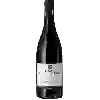
Winery Bertrand-BergéRivesaltes Ambré
This wine generally goes well with
Wine flavors and olphactive analysis
Details and technical informations about Winery Bertrand-Bergé's Rivesaltes Ambré.
Discover the grape variety: Callet
This grape variety is native to the Balearic Islands (Spain), more precisely to the island of Mayorque, and has been cultivated for a very long time. It is said to be the result of a natural cross between the Callet Cas Concos (Negrella) and the Fogoneu, the former being in danger of extinction. Callet is hardly known in other wine-producing countries, but in France it should be interesting for the production of original rosé wines that are pleasant to drink.
Informations about the Winery Bertrand-Bergé
The Winery Bertrand-Bergé is one of of the world's greatest estates. It offers 19 wines for sale in the of Rivesaltes to come and discover on site or to buy online.
The wine region of Rivesaltes
Rivesaltes is an appellation for the historic Sweet wines of eastern Roussillon, in the DeepSouth of France. The natural sweet wines produced in this region have been revered since at least the 14th century. The technique used to make them is one of many techniques used for sweet wines. Unlike botrytized wines or ice wines, natural sweet wines are made by Mutage, a process that involves stopping the Fermentation of the must while a high level of natural sweetness remains.
The wine region of Languedoc-Roussillon
Languedoc (formerly Coteaux du Languedoc) is a key appellation used in the Languedoc-Roussillon wine region of southern France. It covers Dry table wines of all three colors (red, white and rosé) from the entire region, but leaves Sweet and Sparkling wines to other more specialized appellations. About 75% of all Languedoc wines are red, with the remaining 25% split roughly down the middle between whites and rosés. The appellation covers most of the Languedoc region and almost a third of all the vineyards in France.
The word of the wine: Organoleptic
Elements, such as flavours and tactile sensations, that can stimulate a sensory receptor.














